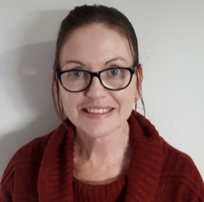What is Technology Facilitated Domestic Violence?
Technology facilitated abuse is becoming a key part of domestic and family violence in the 21st century (Woodcock, Delaney, 2015). Perpetrators are using technology to abuse, threaten, control and stalk partners, former partners and family members.
What technology platforms are used?
A user of violence may use technology such as text messages, Facebook, mobile phones, email or GPS tracking.
What types of behaviours are typical of this type of abuse?
- Sending abusive text messages or emails.
- Repeatedly or excessively texting, phoning or emailing.
- Posting intimate photos to social media sites without consent (revenge porn).
- Using tracking systems to monitor someone without their knowledge.
- Using social media sites to threaten, abuse or harass others.
- Setting up fake social media accounts.
- Misusing technology to gaslight (erode your sense of reality and confidence), for example home lights turned off or on at odd times.
How common is it used as a form of domestic violence?
It is very common. Domestic Violence workers in a 2016 Personal Safety Survey (conducted by the Australian Bureau of Statistics) reported 98% of clients experienced this kind of abuse, with With Facebook and mobile phones, the most common technology used to threaten, abuse, control or stalk others.
Warning signs
Domestic violence can be very frightening, so it is important to recognise the warning signs. Have you ever had any of the following happen to you or someone you know?
- Passwords to your email or other online accounts reset or no longer working.
- Your ex-partner gives the children a new phone or electronic device that he is wanting them to take with them when they return to your care.
- Have you received phone messages from numbers you don’t recognise?
- Have you found messages that you are certain you didn’t send, sent from your social media accounts or phone?
- Have you found a fake social media account in your name?
- Ever noticed strange activity in your email account – such as emails marked as read, that you hadn’t read; or an email deleted that you haven’t yet seen?
- Have you noticed any of your devices running very slowly?
- Have you found unknown transactions in your bank accounts?
- Have you noticed anything strange happening with any household electrical devices you have connected such as the lights or air conditioning?
What can you do?
If you have answered yes to any of these warning signs, then you could be at risk. Reach out to a help service or counsellor using a friend’s phone. Remember your safety is a priority so if you feel like you are in danger right now ring 000.
- Change your passwords immediately and then regularly and make then strong.
- Turn off your location settings on your phone or other devices.
- Be careful posting anything online that can identify where you are.
- Review your safety settings on your social media accounts. The office of eSafety has a great guide that can help you: https://www.esafety.gov.au/key-issues/domestic-family-violence/safety-quiz-interactive-tour.
- Check your apps on your devices. Seek help from an expert if there are any you need to get rid of.
- Don’t open any email attachments from unknown senders.
- Reinstall any connected devices – seek help from an expert if necessary.
- If you’re worried about your computer being safe to use, go to the public library where you can use computers for free and they will be safe to use.
- Most importantly, trust what your instincts are telling you. If you think something is wrong, then act on that instinct.
- If you think someone is cyberstalking you, from a friend’s phone ring 1800 Respect or 000 in an emergency.
- Visit the eSafety Commissioner website. Take their safety quiz or technology check-up to ensure your technology is safe to use.
- If you are under 18 the Office of eSafety Commissioner has powers (under the laws they operate under) to have the images taken down.
 Author: Maree Stevens, BAdVocEd; GCert Sp Ed; M SocWk; M HumServ; GDipCouns; GCert MentalHlthPrac.
Author: Maree Stevens, BAdVocEd; GCert Sp Ed; M SocWk; M HumServ; GDipCouns; GCert MentalHlthPrac.
Maree is an Accredited Mental Health Social Worker with several years’ experience counselling those affected by domestic violence. She is so passionate about support for victims of family and domestic violence that she volunteers her time to support homeless families impacted by FDV through St Vincent De Paul.
Maree is also currently participating in a project with the Queensland Government regarding Family Violence training options for generalist services.
Maree is currently not taking bookings. Our team can assist you with placing you with another clinician. Please call Vision Psychology on (07) 3088 5422.
References:
- Australian Bureau of Statistics’ (ABS) 2016 Personal Safety Survey (PSS 2016).
- ANROWS. Key Statistics Violence Against Women https://d2rn9gno7zhxqg.cloudfront.net/wp-content/uploads/2019/02/19025921/Violence-Against-Australian-Women-Key-Statistics-6-pages-revised_v.2014.11.12.pdf
- Office of the eSafety Commissioner https://www.esafety.gov.au/key-issues/domestic-family-violence/safety-quiz-interactive-tour
- Woodcock and Delaney (2015) ReCharge: Women’s Technology Safety, Legal Resources, Research and Training, Women’s Legal Service NSW, Domestic Violence Resource Centre Victoria and WESNET, Collingwood (ReCharge).